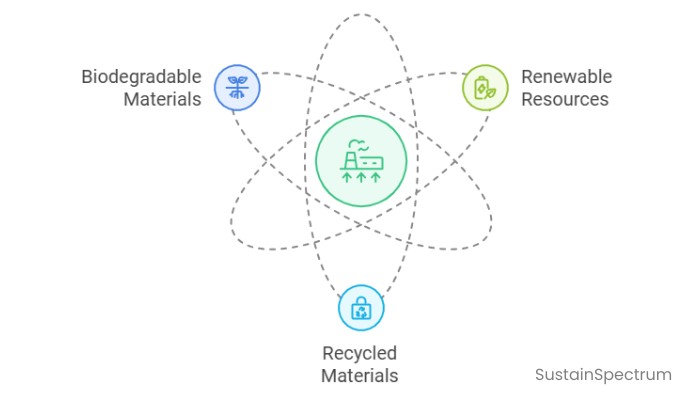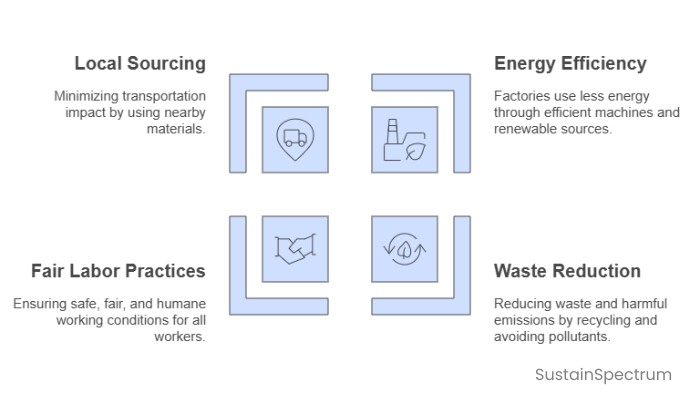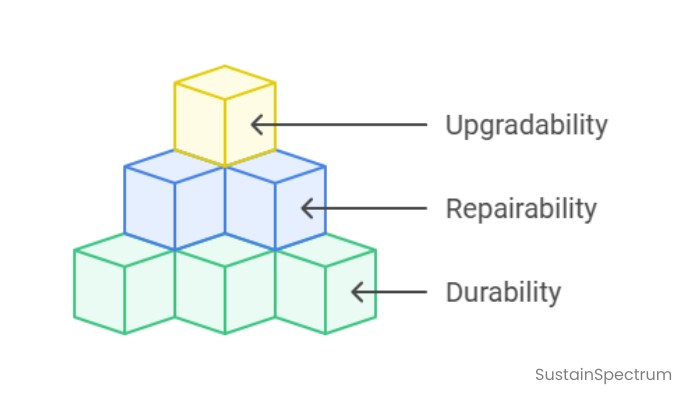A sustainable product is one designed to minimize its negative impact on the environment and society throughout its entire lifecycle. This means it uses renewable or recycled materials, involves eco-friendly production processes, consumes less energy, and can be reused or recycled at the end of its life.
Materials Used
The materials used in a product play a critical role in determining its sustainability. Sustainable products are often made from materials that are renewable, recycled, or biodegradable. Using renewable resources like bamboo, hemp, or cork is beneficial because they grow quickly and can be replenished naturally.

Recycled materials are derived from pre- and post-consumer waste, reducing the need for virgin resources and the amount of waste sent to landfills. Biodegradable materials can break down naturally and return to the earth without leaving harmful residues behind.
| Sustainable Materials | Non-Sustainable Materials |
|---|---|
| Bamboo | Plastic |
| Recycled Polyester | Virgin Polyester |
| Organic Cotton | Conventional Cotton |
Energy Efficiency
Energy efficiency in products refers to the use of less energy to perform the same task or provide the same service. Products that are energy efficient contribute significantly to sustainability because they require less power, which reduces their overall environmental impact. This reduction in energy use decreases greenhouse gas emissions, lowers the demand on power plants, and often results in financial savings for consumers through lower utility bills.
For example, LED light bulbs use up to 75% less energy and last 25 times longer than traditional incandescent bulbs, making them a prime choice for sustainable lighting.
Production Process
Making a product in a sustainable way means using methods that are kind to the environment and fair to people. First, factories should use less energy. They can do this by using machines that save energy or by using power from the sun or wind.
Next, it’s important to create less waste and fewer harmful gases. Factories can recycle water and materials to reduce waste. They should avoid releasing bad chemicals into the air or water.

Treating workers well is also key. People who make the products should have safe places to work. They should be paid fairly and not be overworked. Using local materials can help too. If factories get materials from nearby, it means less fuel is used to transport them.
| Traditional Techniques | Sustainable Techniques |
|---|---|
| High water consumption | Water recycling systems |
| Coal-based energy | Renewable energy sources |
| High waste production | Minimal waste processes |
Packaging
Sustainable packaging solutions aim to reduce environmental impact by using materials that are recyclable, biodegradable, or made from renewable resources.
- Biodegradable packing peanuts.
- Compostable mailers and containers.
- Recycled cardboard and paper.
By implementing sustainable packaging, companies can significantly decrease the environmental harm associated with waste and disposal.
Supply Chain Transparency
Transparency in the supply chain is vital for verifying the sustainability of a product. It involves clear documentation and open communication about where and how every component of a product is sourced, manufactured, and distributed.
Companies that are open about their supply chain processes are often viewed as more responsible and trustworthy, which can drive consumer preference for their products.
Product Lifespan
Making products that last longer is a big step toward sustainability. When items are durable, people don’t need to replace them often, which means less waste and fewer resources used. For example, a well-built bicycle can serve someone for many years, reducing the need to buy new ones frequently.
It’s important that products are easy to repair. If something breaks, it should be simple to fix instead of throwing it away. Companies can design items with parts that can be replaced easily. This helps extend the life of the product and saves money for the user. For instance, some smartphone makers now offer models where you can swap out the battery or screen yourself.

Upgradable products are also helpful. A computer with parts that can be updated means it can keep up with new technology without needing to buy a whole new system. This reduces electronic waste, which is a growing problem around the world. According to a report, extending the average life of clothing by just nine months can reduce carbon, water, and waste footprints by up to 20-30% each.
Certification and Standards
Certifications and standards help verify that products are made in ways that are good for the environment and fair to people. They make it easier for everyone to choose sustainable options.
Here is a list of important certifications:
| Certification | What It Means |
|---|---|
| Energy Star | The product uses less energy and saves electricity. |
| Fair Trade Certified | Workers receive fair pay and work in safe conditions. |
| Forest Stewardship Council (FSC) | Wood and paper come from forests that are managed responsibly. |
| Organic Certification | Products are made without harmful chemicals or pesticides. |
| Global Organic Textile Standard (GOTS) | Fabrics are made from organic fibers under strict environmental and social rules. |
| Cradle to Cradle Certified | The product is safe for people and the planet and can be reused or recycled. |
| EPEAT | Electronics meet environmental standards and are energy efficient. |
| LEED (Leadership in Energy and Environmental Design) | Buildings are designed and built to save energy and resources. |
| Blue Angel | Products have a low impact on the environment, verified by Germany’s label. |
| EU Ecolabel | Products meet high environmental standards throughout their life cycle in the European Union. |
These certifications not only help consumers make informed choices but also encourage manufacturers to adopt more sustainable practices in order to gain a competitive edge in the market.
